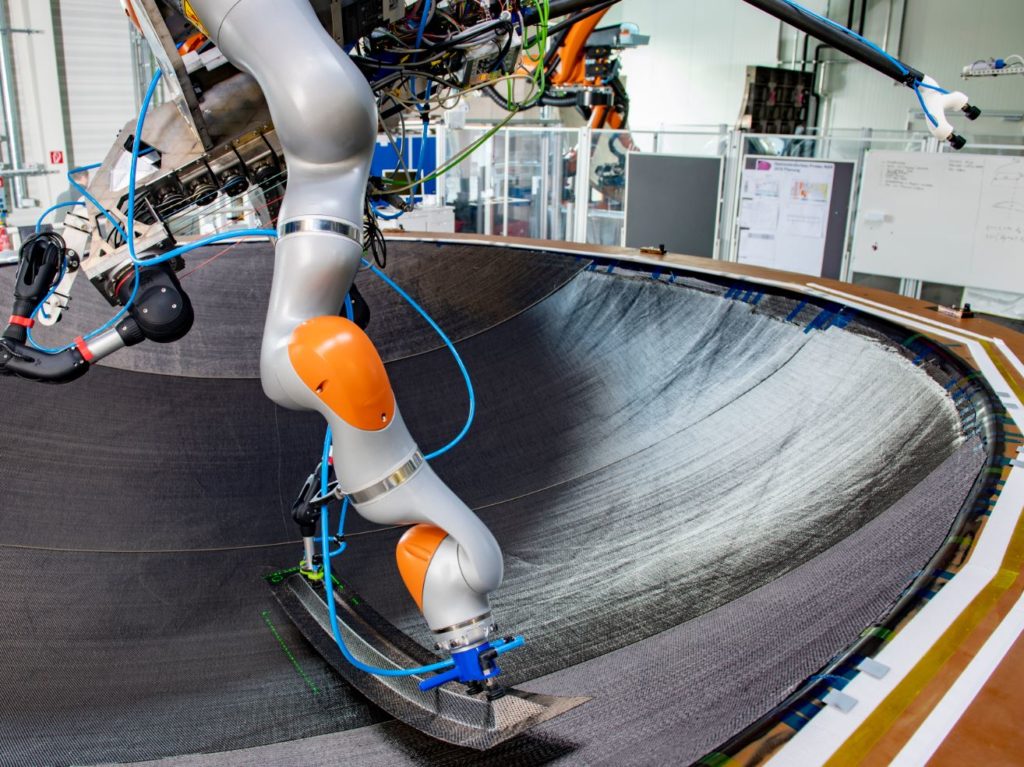Flexible pick and place of stiff and flexible textiles …
A large number of differently sized and shaped parts is required for the production of lightweight CFRP aircraft structures – but with a comparatively low lot size. This is challenging for automation systems, as they must adapt to constantly changing requirements. The multi-kinematic gripping system developed at the Center for Lightweight-ProductionTechnology (ZLP) in Augsburg provides an innovative solution. It is attached to a large industrial robot (ideally a gantry system) and thus can also be used on large parts such as pressure bulkheads or other fuselage components. Three small robotic arms – each with at least six degrees of freedom – provide the required adaptability for each particular task.
… with the example of vacuum bagging
The vacuum bagging process for a rear pressure bulkhead can be simplified and expedited using near net shape tailored packages of auxiliary materials. Three different types of packages are required – two thin, rectangular packages as well as one much larger, triangular package. The flexibility of the gripping systems allows the handling of all the packages with a single manipulation system – although the packages exhibit large differences in size even within one type – no package resembles another. In addition to flexible textiles, the gripper is also able to position and place rigid stiffener elements, such as stringers, on a carbon-fibre preform. The force-torque sensors integrated into the lightweight robot (KUKA LBR iiwa) also make it possible to perform ‘sensitive’ tasks. For example, it is possible to press the auxiliary materials into the radii of the stringers with a welldefined force. This helps to prevent air entrapments during the subsequent infusion process.
Robot control
The sequentially mounted robots create kinematic chains with 12 or 13 degrees of freedom. To control these complex types of chains (for which no unique solution exists) an optimisation system based on genetic algorithms has been developed. This allows the determination of a position for the gripping system that is as optimal as possible for the small robot arms to perform their tasks.
German Aerospace Center (DLR)
Institute of Structures and Design
Dr. Michael Vistein · E-Mail: michael.vistein@dlr.de · DLR.de
